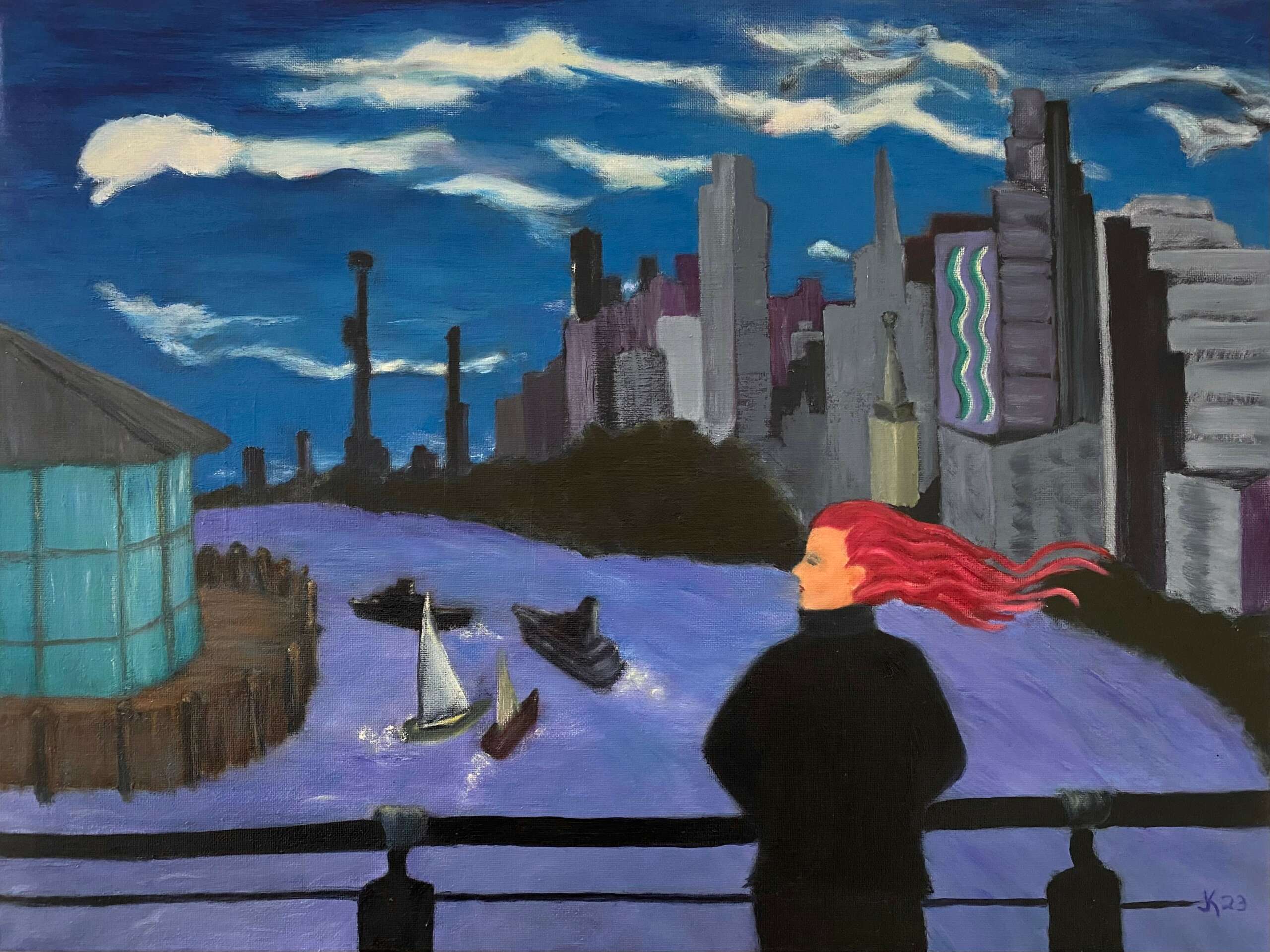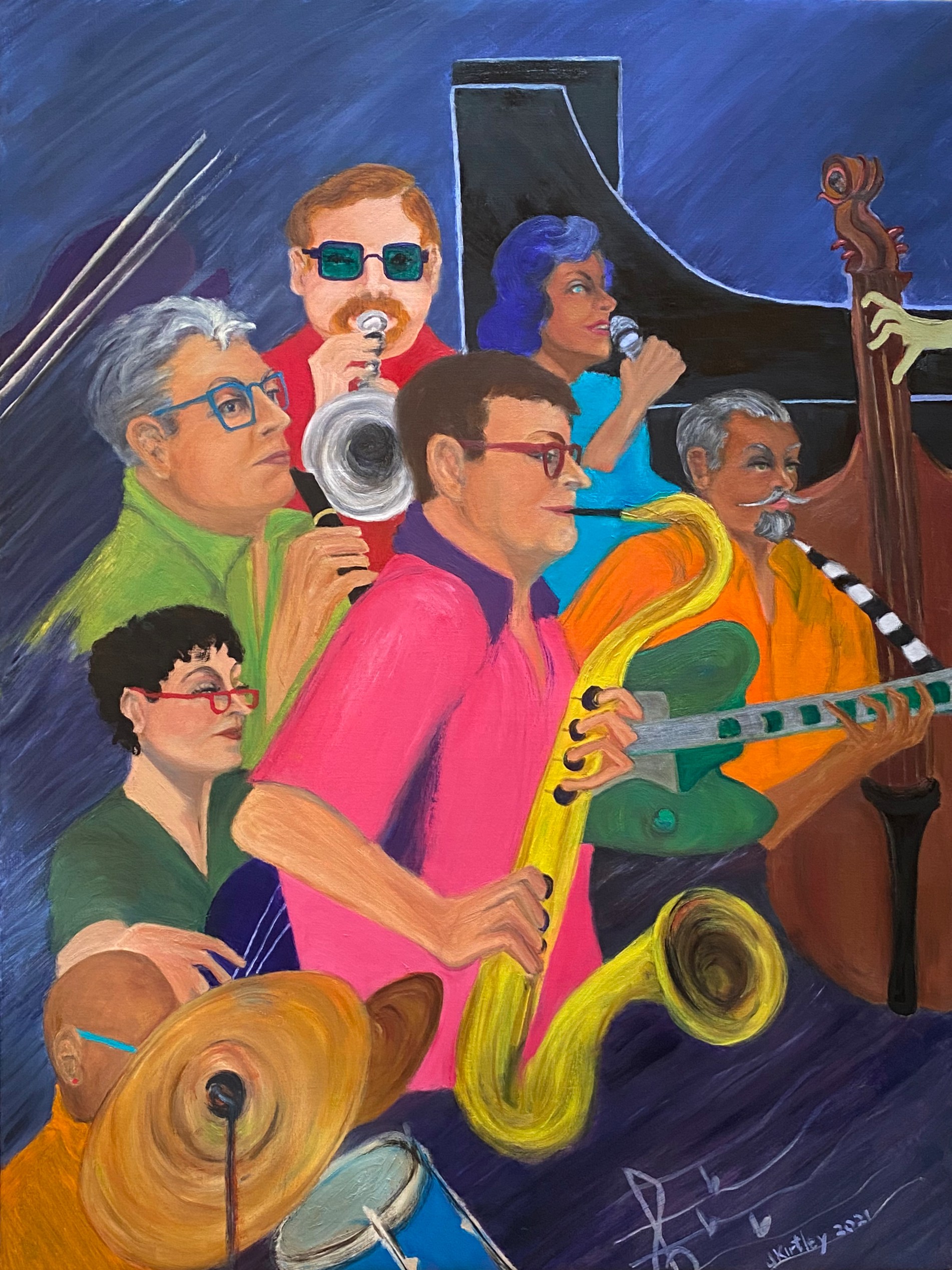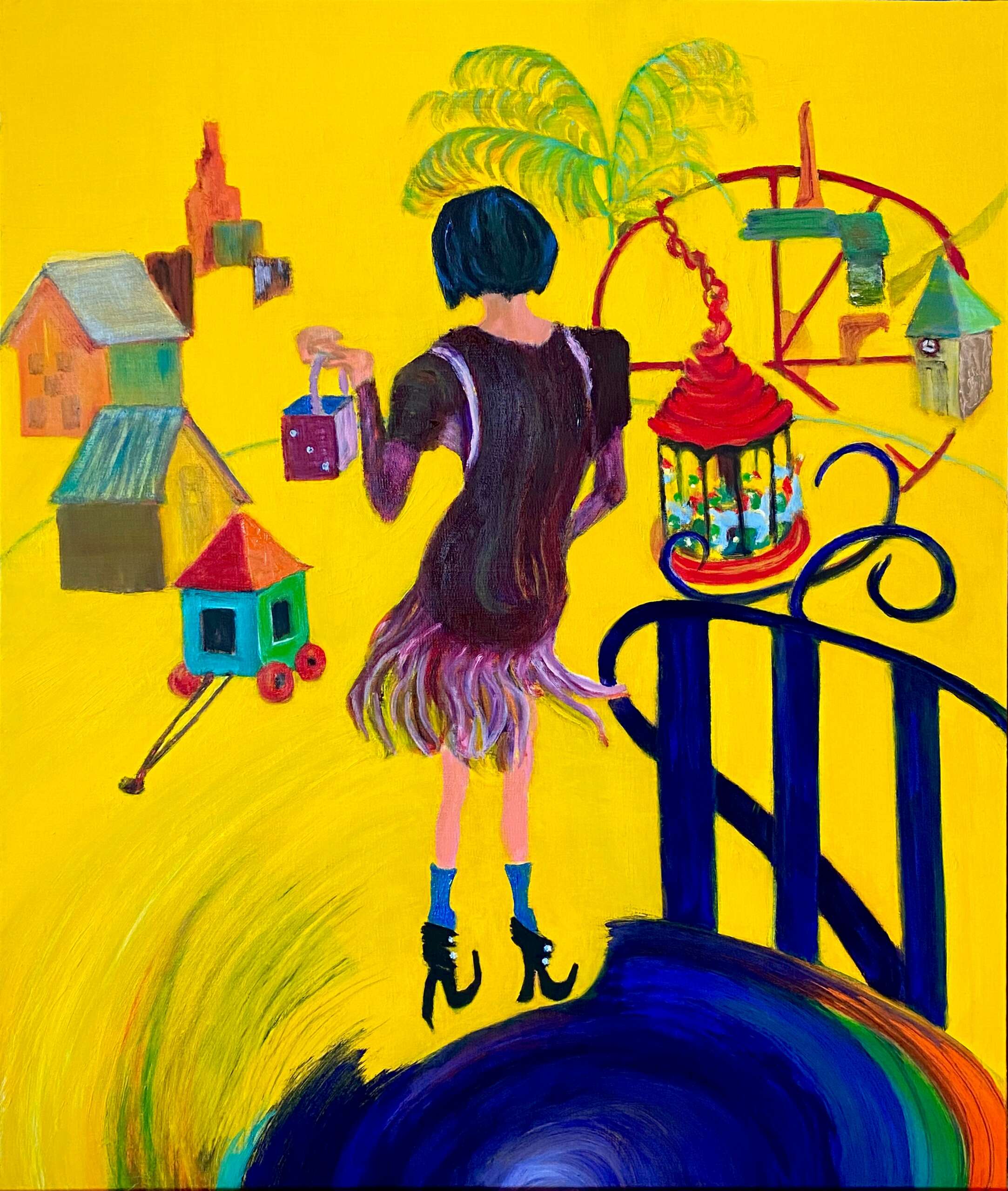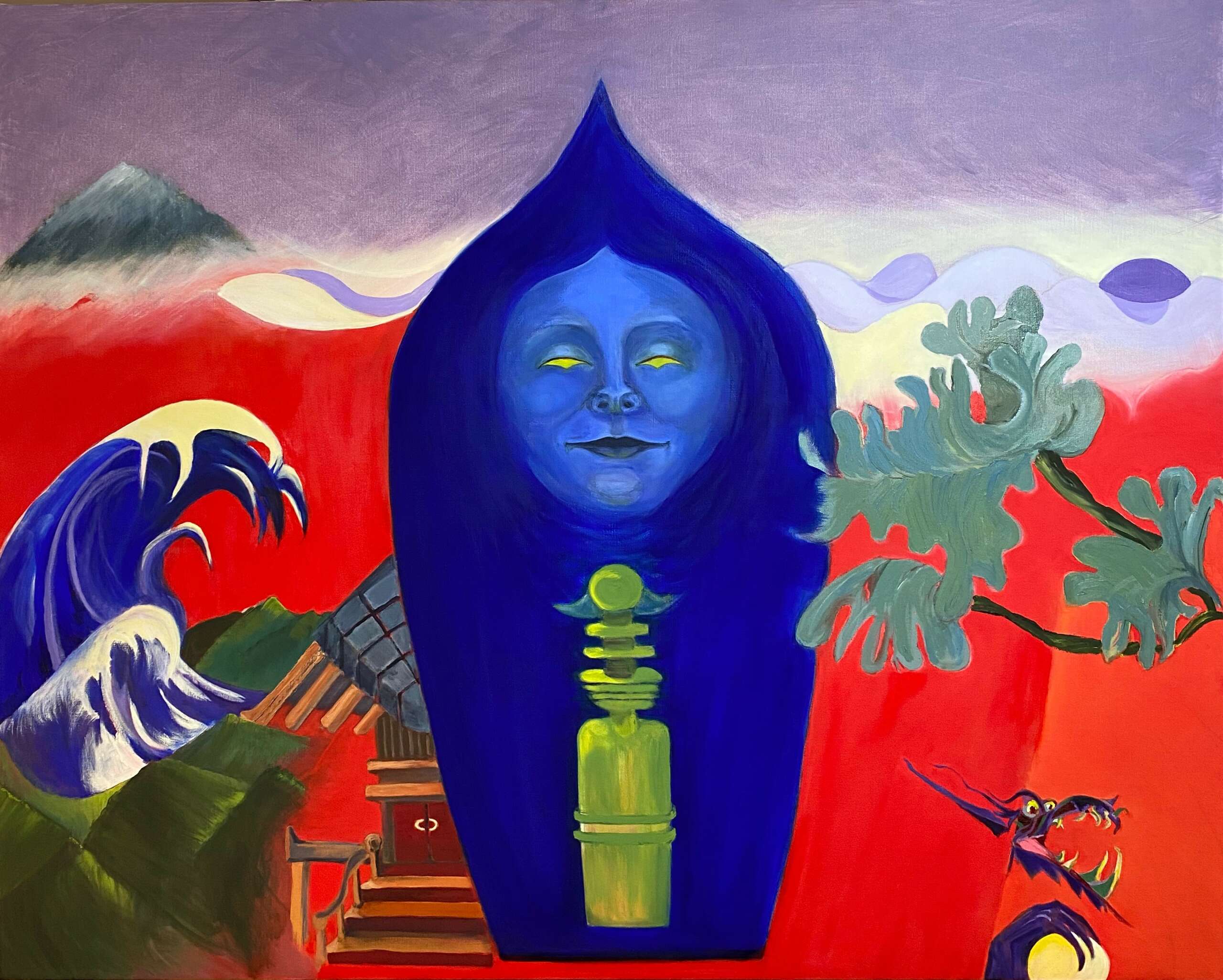We were lucky to catch up with Judy Kirtley recently and have shared our conversation below.
Alright, Judy thanks for taking the time to share your stories and insights with us today. How did you learn to do what you do? Knowing what you know now, what could you have done to speed up your learning process? What skills do you think were most essential? What obstacles stood in the way of learning more?
Telling my own story rather than giving facts to Artificial Intel (AI) and letting it do its thing may be less than advisable, but here I go.
I’ve been fortunate to have had a lifetime of creativity, deeply immersing myself for many years in several disciplines, From the age of seven, I studied ballet for 17 years; that led to 45 years of theater, music and drama. Then I found photography and began to slowly move away from stages while keeping my singing chops up along the way.
Being an artist, a painter, a creative, a practitioner – whatever title one chooses – comes from passion. It’s much like cooking. You make food because you like to eat and attempt to make it the way you want it to taste. So you keep working at it, trying different approaches to get what pleases you. Well, this is my way of looking at making art. I continuously look for ways of creating what I want to see in my images, how to see, what to look for, and what it is that makes me happy to see. That’s how I work and how I learn, and how I find the joy.
Speed in learning isn’t what it’s about for me. It’s about challenging myself, being committed, serious, studious, adventurous, courageous. It’s not trickery or having a system that gets me there. It’s about process. Trial and error. Hard and painful lessons of succeeding and failing. Having faith, permission to express my vision in 2 dimensions.
Drawing. Essential. Composition, color, mass.
Time can be a potential obstacle, or it’s my friend. Perspective. It takes time and patience with one’s self. That’s the hard part because even though the good results begin to come, I know I still have more work to do, more to learn. That’s also the good part, knowing that I can never learn it all.


Awesome – so before we get into the rest of our questions, can you briefly introduce yourself to our readers.
First, when I begin a painting, it is not necessarily about making a product for a specific client. Challenging myself and my skills. I paint and draw because it’s an urge, a thrill, to have found something I do well and I enjoy sharing it with others.
I operated my photography studio in New York City for 30 years. I started photographing concerts and did portraiture, CD covers and celebrity headshots in my studio. Having a career in the performing arts for 45 years gave me a jump on how to photograph live performance because I knew about timing, music and drama. At that time I was taking classes, auditioning, singing, dancing and acting, all while I had a day job. I was also shooting pictures in my studio and working in my darkroom well into the night. It wasn’t easy but what a learning experience it was. Those were the days before digital cameras so my photos were done in the camera, by hand, and in the darkroom. There were no tricks. No computers. No ‘photoshop’ programs. If something needed to be changed it had to be done in the printing and retouching, by hand – one tiny dot at a time. That informed my understanding of how to paint and draw early on in my arts study. My move to the canvas was because the camera was stunting my vision. It was “in my way.”



Is there something you think non-creatives will struggle to understand about your journey as a creative?
Making art isn’t easy. If it were, “everyone would do it.” Having performed on stages for many years, I eventually became disillusioned going to auditions, meeting agents and casting directors. Starting a whole new career in the art world, with a new cast of ‘who’s who,’ was daunting. Learning who are the important current artists, which galleries to visit, how to prepare a presentation–these are part of the business side of an artist’s life. I care that my images reach an audience, and I have to find it. Artists need feedback to direct that search. My college studies did not include painting, so developing a new network of fellow artists and being accepted into arts organizations has been important in navigating these waters.
From the beginning, in order to develop and improve my skills, I’ve attended the Art Students League in NYC where there are celebrated and accomplished artist/instructors. Each intensive workshop I take, usually five 8-hour days, addresses specific aspects of how to approach a painting.
My core belief is that first you have to learn to draw. My mentor, Bruce Cahn (a fabulous photographer and painter), told me to first learn to draw when I said I wanted to paint. So I began to draw everything I saw, including my feet – everything! I took a workshop with a master draftsman, Francis Cunningham. Eye-opening! I took several workshops with master painter, Peter Cox, who gave me tools that will stay with me all my life.
The saga continues. For instance, being a figurative painter, abstract art made me feel confused and “left out”, mainly because I didn’t know anything about the elements. So I took an 4-day workshop about abstraction with painter Larry Moore. Yes, only four days, but the workshop was helpful not only in learning about the ‘rules’ (there really are none), but some of the vocabulary of how to begin making an abstract image. Yikes. It’s difficult. Taking workshops certainly isn’t like working for a degree, but they give me something to work towards and expand my visual language. We have to do the work. Practice.
Is there mission driving your creative journey?
I’ve had the good fortune to travel quite a bit. At every destination, I find a museum or local gallery. Before learning photography and painting, my cultural experience had been primarily in music, theater, or literature. Frequenting major museums and soaking up all that historical and social knowledge has been exciting and essential.
I almost always have paper and pen with me to sketch. The paintings I’m sharing here exemplify how I use my drawings to develop an idea into a much larger painting. In my piece, “Peace,” I utilized drawings from my trip to Japan. “The Jam Session”, a 40″x50″ painting, was commissioned from a small ink drawing I made at a jazz jam session. On NYC’s Chelsea Piers, I expanded my drawing of a lady standing at a rail into a painting, “The River”. “The Adventures of Miss Lollygag” was inspired by a young woman I saw sashaying down 6th Avenue in NYC. I dictated a note to myself on my phone describing her, then rushed home to draw the memory of her before it was lost. Recently, while waiting for the waiter to bring our food, I made a quick drawing of my husband in a small Parisian cafe.
Contact Info:
- Website: https://www.judykirtleyart.com
- Instagram: https://www.instagram.com/kirtleyjudy2020/
- Facebook: https://www.facebook.com/judy.kirtley.52/
- Youtube: https://www.youtube.com/watch?v=XTmfLrBVt5Y, https://www.youtube.com/watch?v=zMG3nvO05kM, https://www.youtube.com/watch?v=dZAtMPeOQhY
Image Credits
I alone took the pictures of my work. Bill Mays took the photo of me in my studio.



1 Comment
Robin McMullen
Judy’s story inspires me!